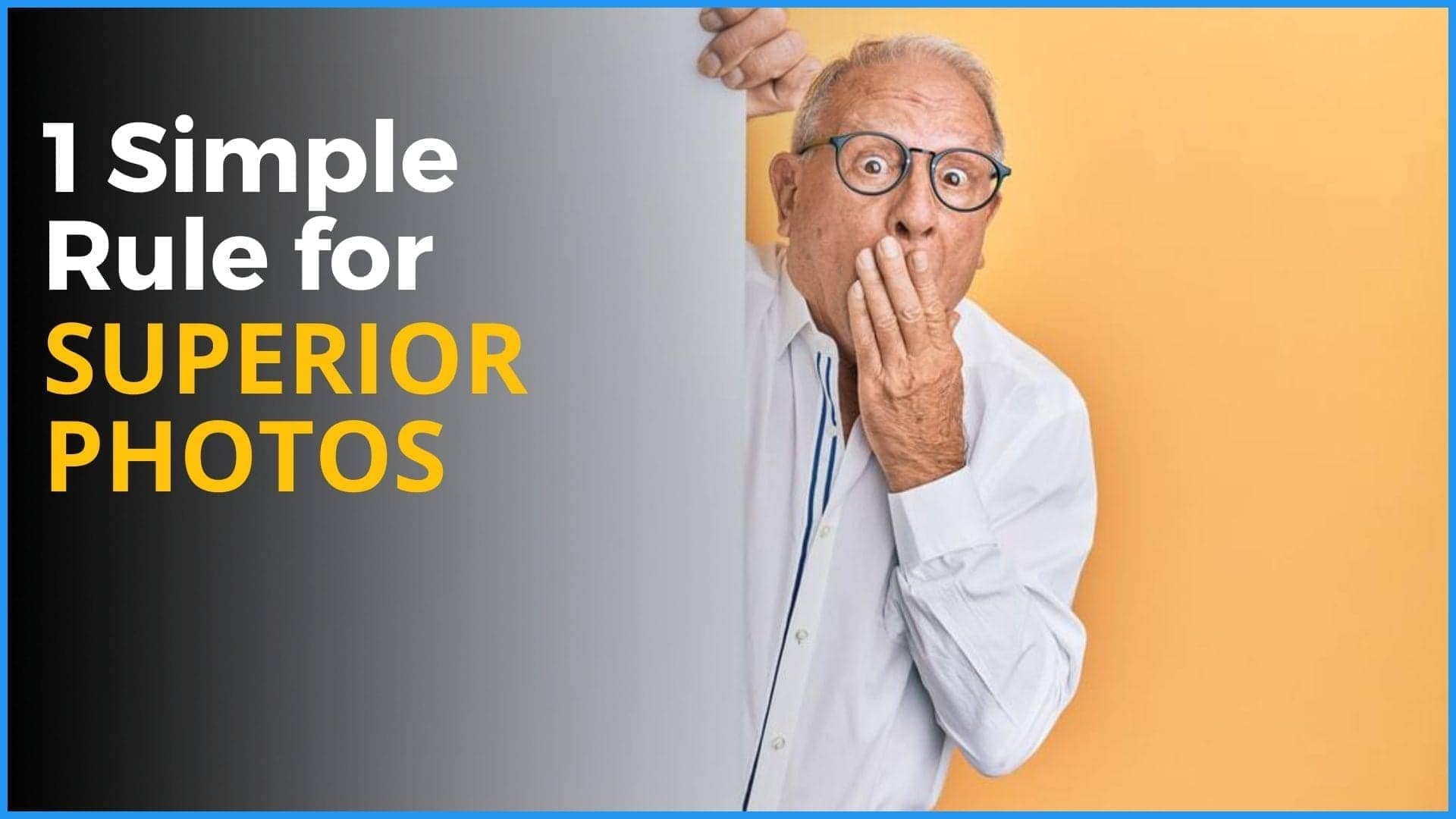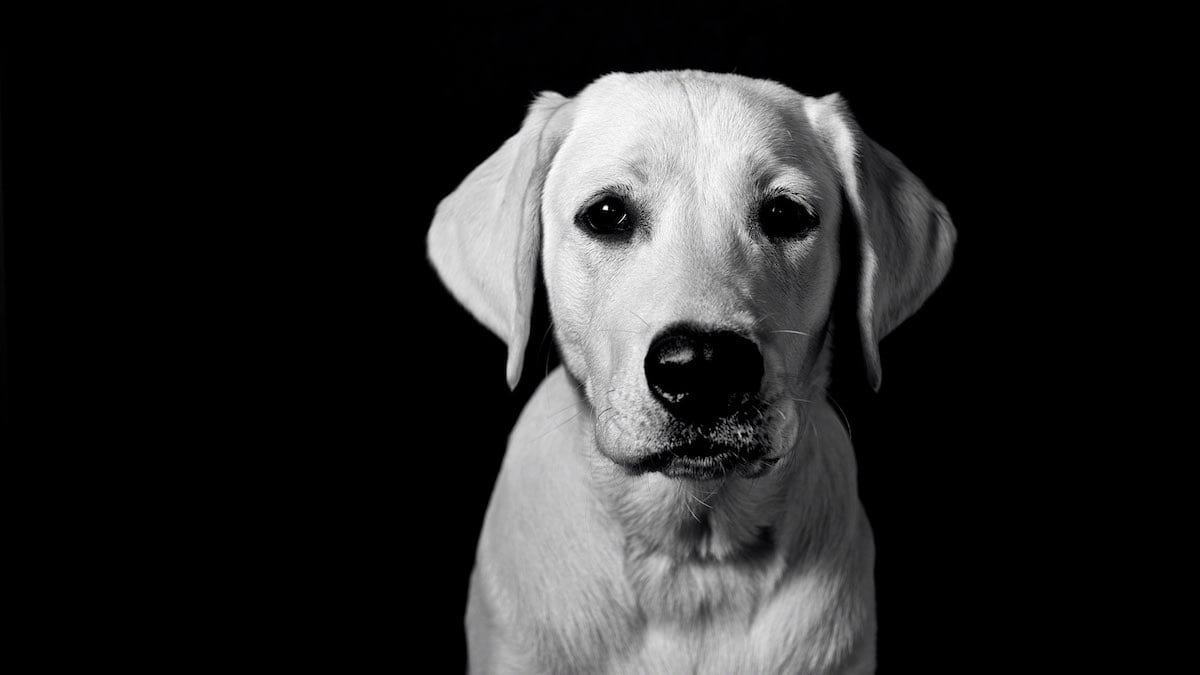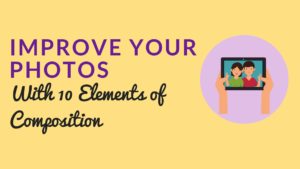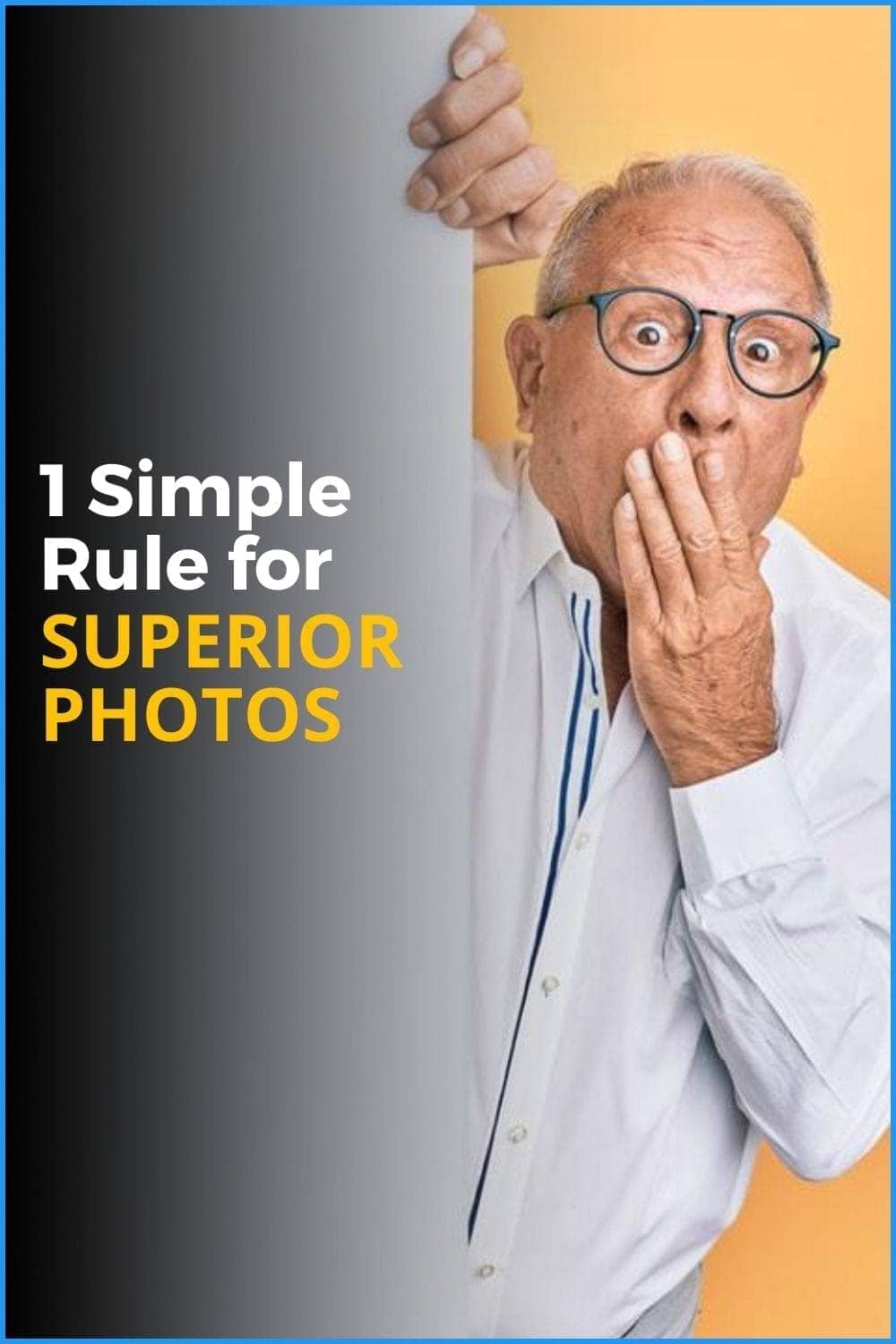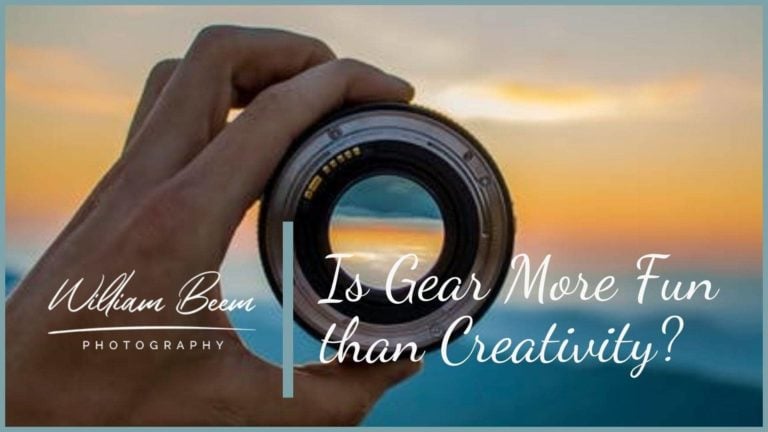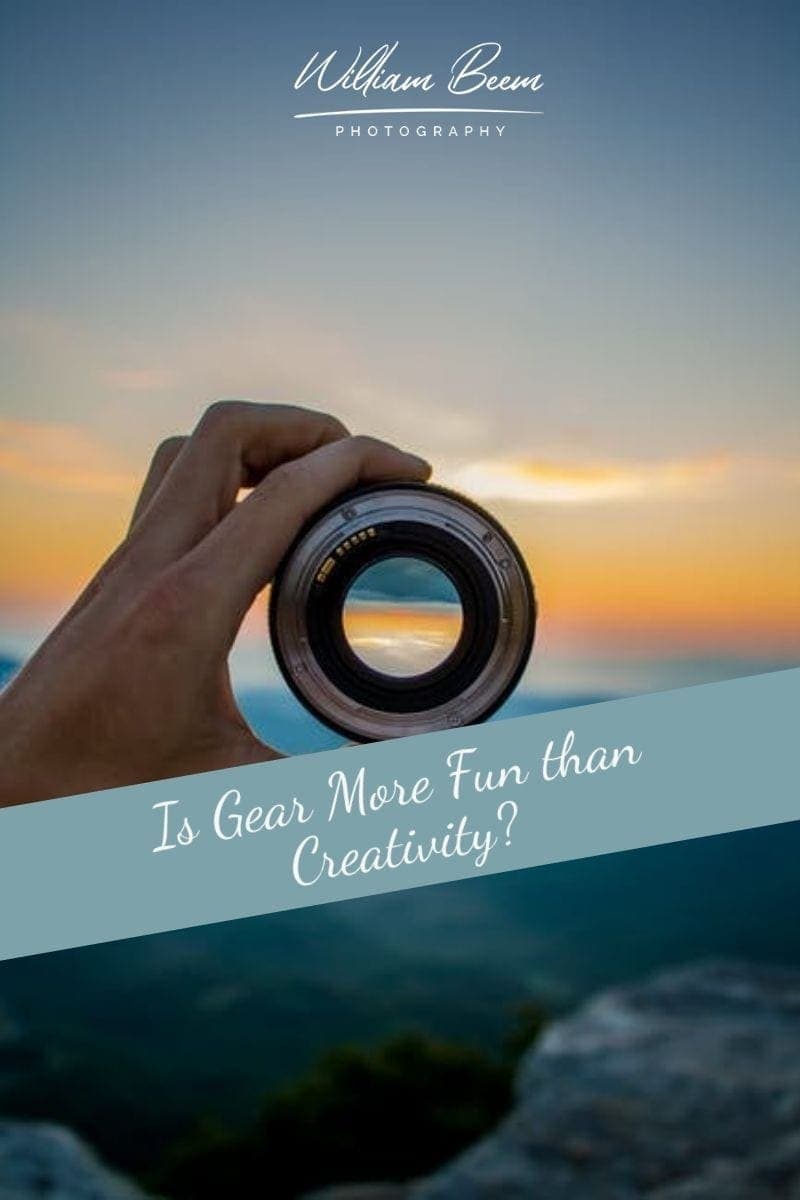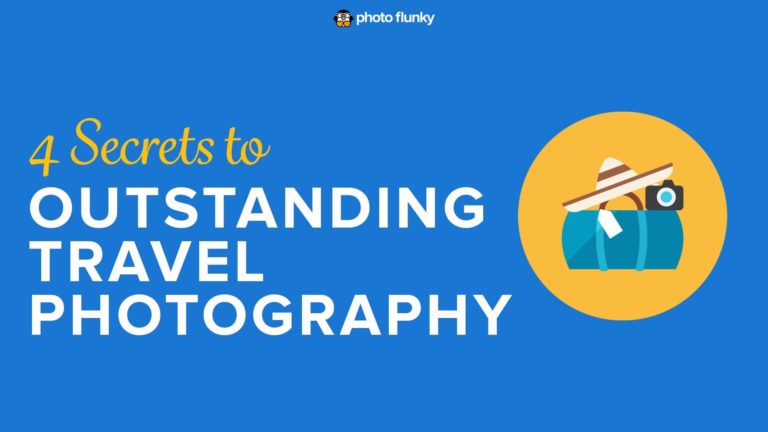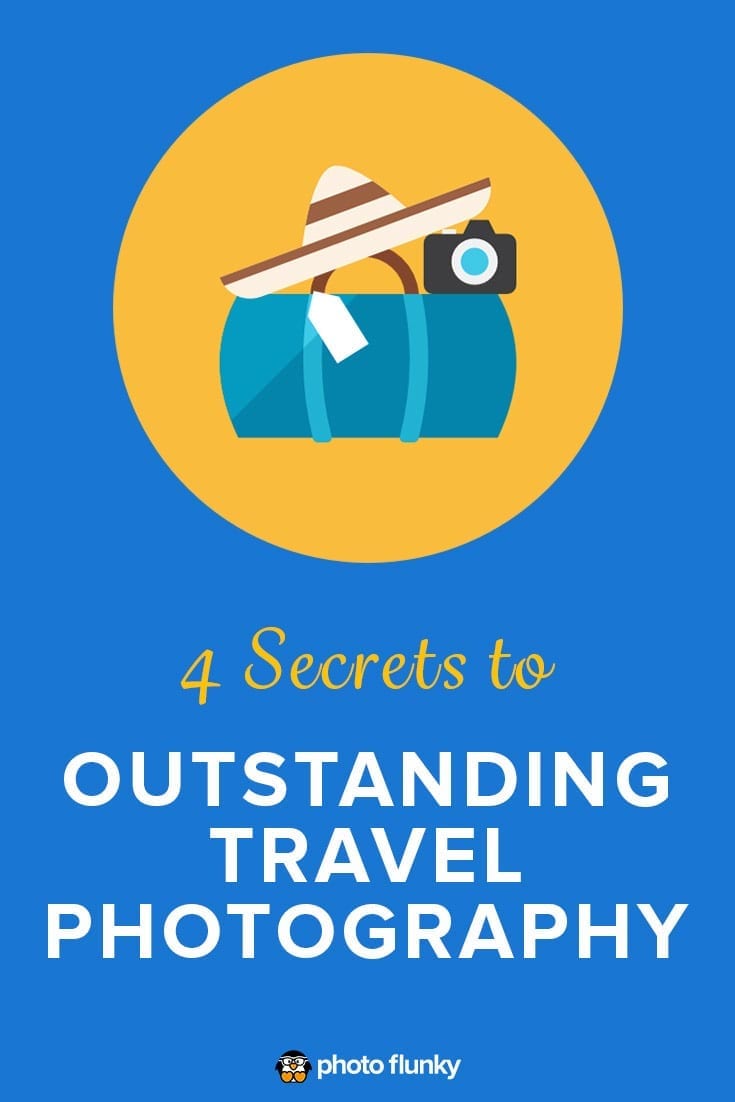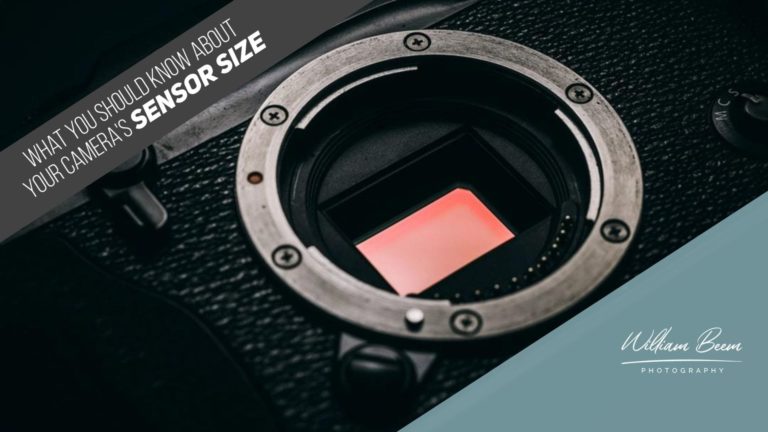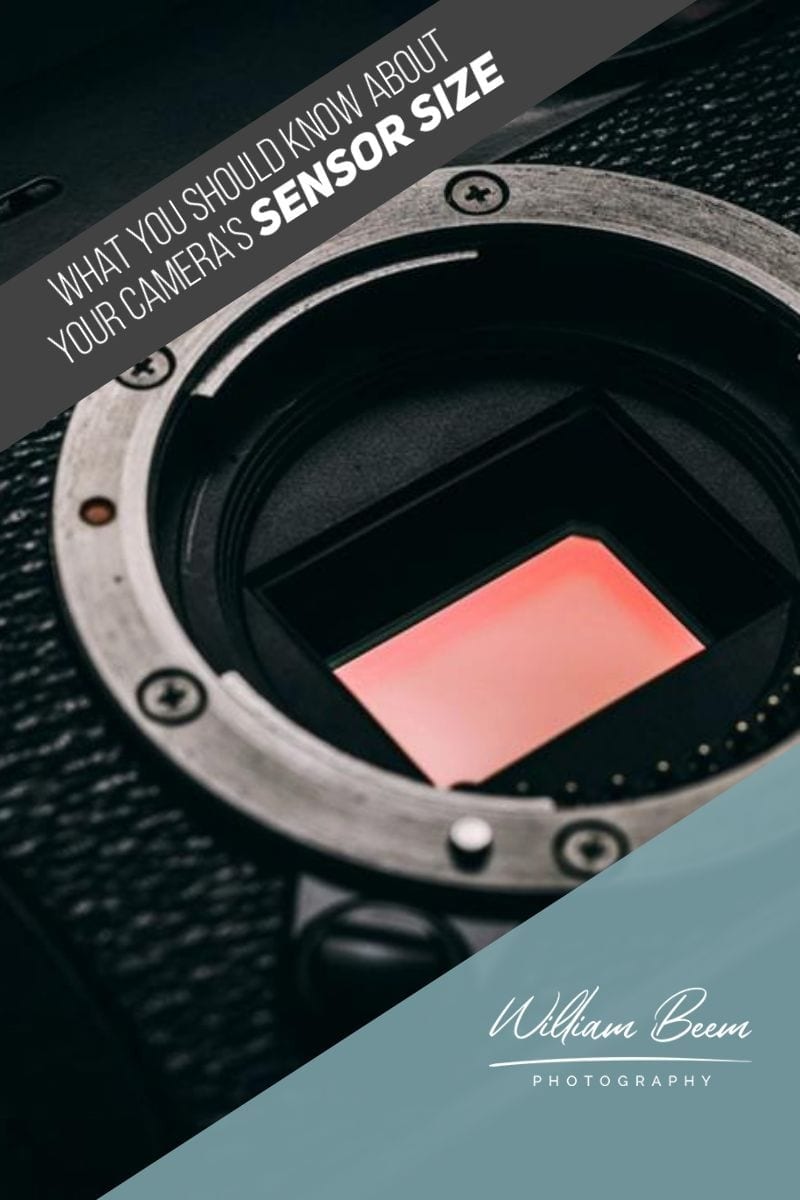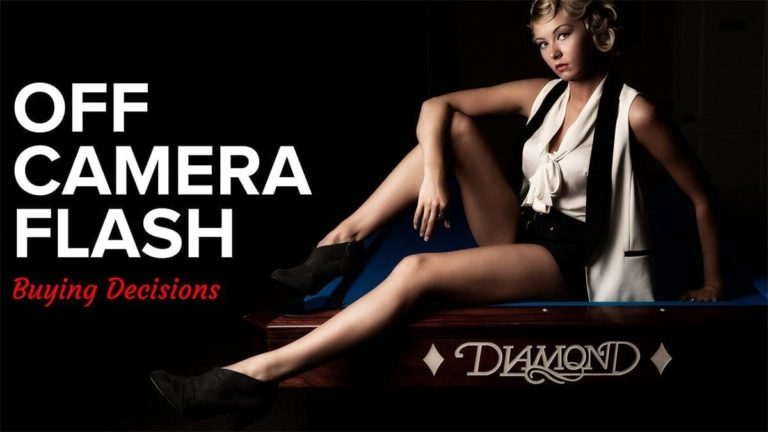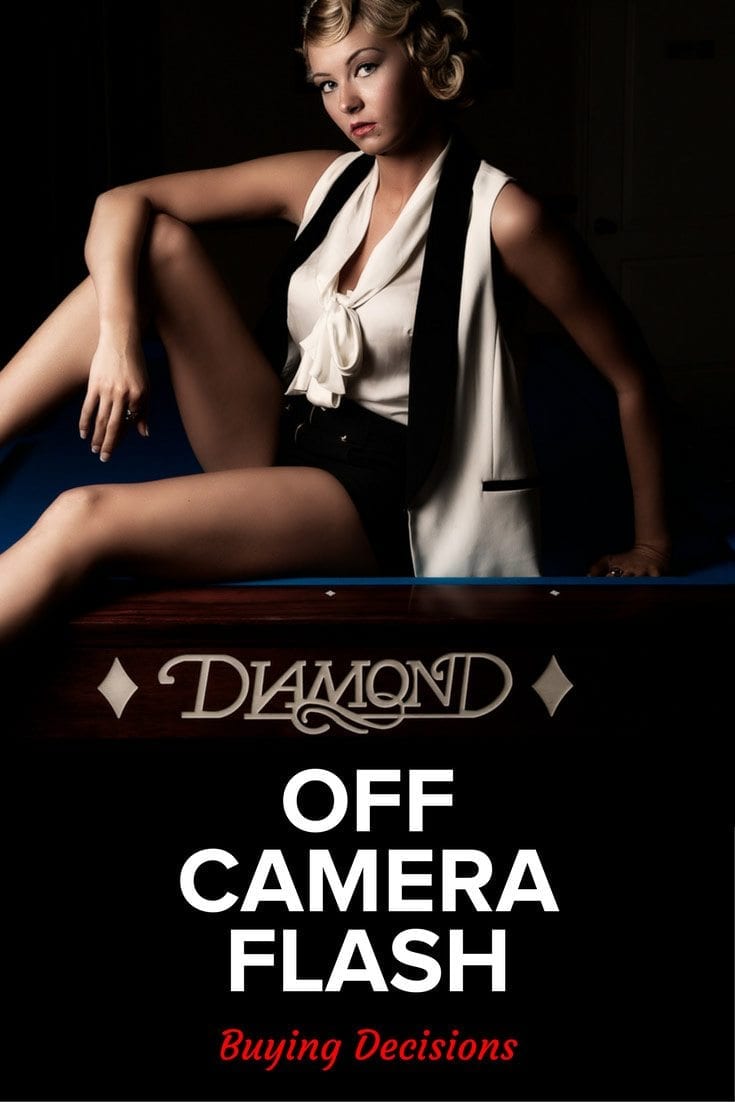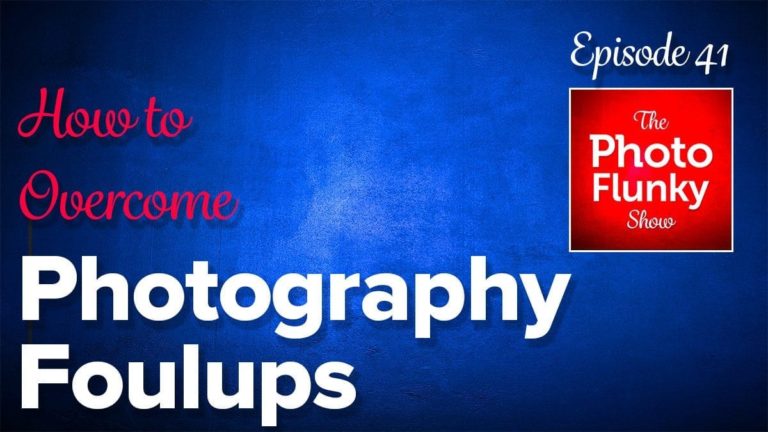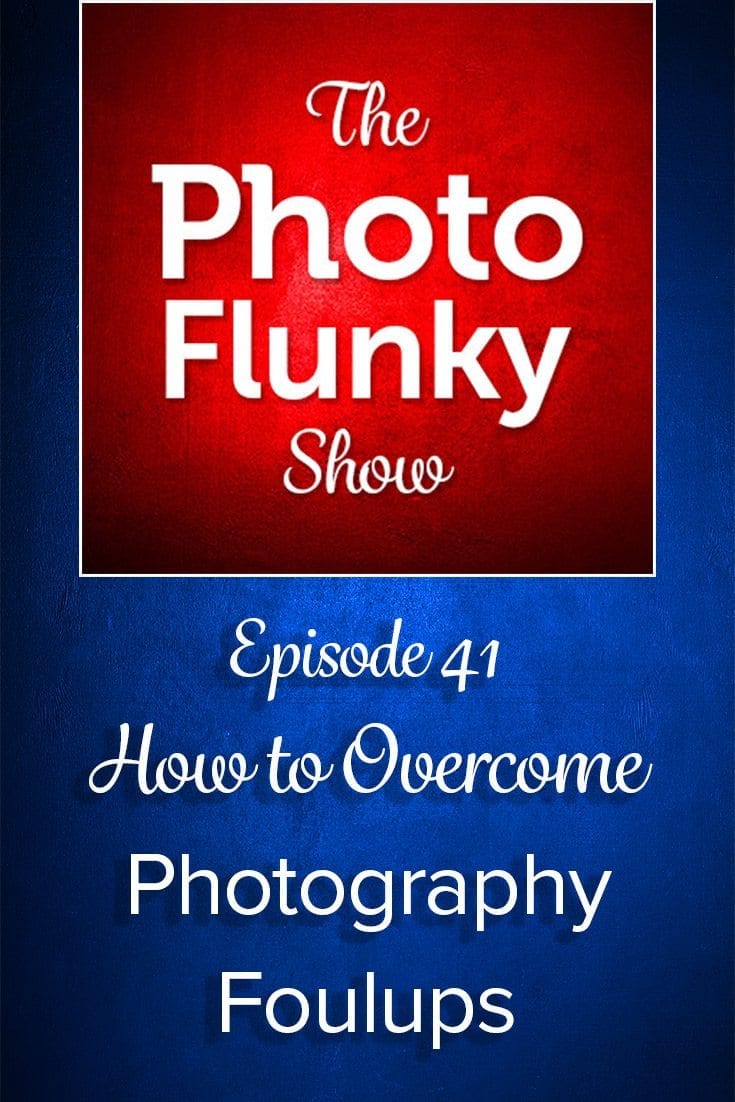Affiliate Disclosure: We earn a commission if you purchase through one of our links at no additional cost to you.
If you want to create superior photos, there’s really only one rule that you need to remember. Everything else you learned about photography, or still need to learn, only comes into play to support this one rule.
Create Superior Photos by Creating Emotional Connection with Your Audience
That’s it. That’s the one simple rule you need to remember to create superior photos.
Make a connection. Create some emotion. Cause the people in your audience to feel something so that they need to stop and look at your photo to take it all inside.
While this sounds simple, there’s a lot you need to do in order to create that connection with your audience. You may not yet even know who is or isn’t in your audience, and that’s OK.
To be fair, creating emotional connection is more of an objective than a rule. I think part of the problem some photographers face is that they haven’t defined objectives.
Quite honestly, not many people are talking about this sort of thing. That’s because most people are searching for technical how-to articles. Yet those technical goals don’t really serve you if you don’t have an objective of making a connection to people.
How to Serve Your Audience
We’ve said this numerous times. Create a photo that your audience loves by making them feel some emotion.
I took this photo of my dog Milo for myself – an audience of one. It turns out other people liked this simple photo, and it was even the cover for a dog magazine.
Some people like dogs, or specifically Labrador Retrievers. Others may like black & white photography. Even more may like minimalistic photos.
Milo passed away, and now it’s a photo for my family because we really miss the little guy.
You may or may not know who will end up seeing your photos. If you develop a consistent style, chances are good that you’re going to develop an audience based upon your subject matter, your vision and your technique.
Here’s something to keep in mind about developing a connection with your audience. You don’t have to swing for the fences. Your emotions don’t always have to be epic ones.
In other words, think more like Seinfeld than Game of Thrones.
Seinfeld became a cultural phenomenon by simply reminding people of the silly little problems we face in life. Things like getting lost in a parking garage or returning an overdue book to the library.
Engage your audience, but you don’t have to club them over the head with a heavy-handed message all the time.
About Luminar AI Elements
At the end of the podcast, I mentioned that I have a course for Luminar AI users. This short video lets you know more about what you can expect.
If you’d like to see more information and the course outlines, just click the link below to visit the course page.
Click Here to visit Luminar AI Elements Course Page.
Time Stamps
I said on podcast this year that we wanted to get back to fundamentals. And today we're going to do that. We're going to give you one simple rule for superior photos. I'm William Beem. Welcome to I Like Your Picture, the show that helps you improve your photography with visual storytelling. What is visual storytelling? It's a method of approaching your photography with a knowledge of who you're trying to serve with your photos and what emotion you want to make them feel.
We encourage you to concentrate on your subject, light and background to create a photo your audience loves. I'm glad you found us. Hi, my name is William Beem. I don't know if you know this. You probably don't because you can't see anything. But right next to where we record, I've got a couple of rubber ducks and Lee is trying to feed beer to the one that looks like Donald duck.
He looked so happy. I thought I'd help him chill. Hey, welcome to this podcast. What we want you to be able to take away from this is to understand what makes a superior photo, the most important thing you can do to create superior photos. And also, we kind of want to leave you with why less is more with that. I'm going to throw this over to Lee because that's my tradition.
I like to put her on the spot. And just in case she knows what I'm talking about or not. When I come up with these little topics. It's more fun that way. Lee what makes one photo superior to another. You got to see the subject that is what's going to jump out and hit, hit you. And I don't care what anybody says.
One photo can only have one subject. If it's a collective group of things, that collective group is the subject, but you have one subject. And if that isn't isolated, which means that it stands out no matter how you choose to do that, you've lost it. Yeah. I'm going to go a step further and, and you're right, whether it's a group or an individual or maybe something that's a location,
or you do your still life photography and you've got your subject there. So even though there's a lot of things in that, there's one thing and you want to draw the eye there, but no, you're wrong. That's not what makes one photo superior to another. All right, dear. Okay. Well, this over to you, The thing I'm looking for is basically some kind of emotional and visual impact.
Sometimes some kind of connection. When you're looking at something, you've got to have some response to it. And I think the thing that makes one photo superior to another is when you connect. Rather, I should say, when your audience connects with whatever your subject is and your photo and you're right, you absolutely do need to have one subject. You need to draw the eye to that one subject.
But once you get them there, there's gotta be a reason that something inside of them resonates about what is this? Why do I feel something about it? And I think that's really what makes a superior photo. It doesn't have to be complicated. It doesn't have to be overly simple. There's ways to do this all over the board. But I think you got to have something with impact something with connection.
And that's really what I say is what makes a superior photo. See, I don't think that you, people connect with the photo. The photo is a whole works when it's helps the subject deliver impact. So let's go ahead and dive a little bit deeper than that. It's like, what is your photo need to connect with your audience on a visual and emotional level?
The first thing that you need to understand is you're not going to connect with everybody. You're making a photo that you like, or you're making a photo for your audience, but you're making it in such a way that a certain subset of people. And I'm going to call that subset, your audience, that they enjoy what you've created. Yep. That means that there's room for every genre of photography,
there's room, for every style, some people are going to connect with more, a larger size of an audience than others. And that's okay. You cannot be all things to all people and you should not try to be all things to all people. I agree. Lee, when you create your flat lay, particularly your, your coffee photos. You've told me before that it's not about the coffee.
It's about the experience that people have when they get that first morning cup of coffee. That's right. It's about the, the mood or the feeling or the aura or whatever it is. And I'm specifically targeting people who like coffee. You would not be interested. It would not. You might like the photo, but it's not going to have an impact on you in the way that it does to somebody else.
Because when something, when you resonate with something, I mean, imagine you're sitting, watching a TV show or something and a commercial comes up and you just love ice cream with hot fudge sauce and this commercial comes and they drizzling it on. It kind of triggers little signals in your brain. You know what that tastes like. You can feel the sensation in your mouth.
That is because it's something you love. And I don't feel that way about ice cream and sweet things. So I look at and I go, oh yeah, that looks really, I can appreciate it. It looks really good, but it is not going to have the, it's not going to have an impact on me. It's going to garner some appreciation from me.
And she's saying that because I don't drink coffee. I, I understand that a lot of people like it, I mean, there's a Starbucks on every corner and all sorts of coffee shops and people sell coffee all over the place. They love the smell of it. When they make it in the morning. They love the first taste that's just a little bit too hot and it slows down the experience.
And you're trying to convey that sense to people who understand it and have already experienced it. And you're giving them a presentation that's different than what they're going to get. Probably on their average, you know, a cup of coffee. Well, look, morning, coffee is actually a ritual and people get almost, you find security in your rituals. It tells you that things beyond this are going to be okay,
because at least up to this point of the day, things went, you had control over it. And I think people can relate to a ritual. So the people I'm connecting with are people who understand that coffee ritual. Not everyone has their own thing. You might have an orange juice and a bagel thing going. You might skip breakfast and go and do something different or sleep in and have lunch as
your first meal, because you work shifts. It's, you know, those people, it doesn't mean that their ritual is any lesser. I'm not trying to appeal to them. And I'm okay with that. Yeah. And that's really the lesson that we want to make sure we share is that you can have a superior photo for your audience, but your audience is not going to be everyone.
Same thing. Like Lee not really an ice cream. I love my ice cream. My ice cream is the reason why there are no wrinkles on my face at my advanced age. Maybe that's why our daughter says ice cream face. Yes. Ice cream face. But it's like, if you show me that thing you were talking about with ice cream and then drizzling the chocolate over it,
I'm anticipating that first bite. And when I look at food, photos of food that I like, that's really what I think about. I think that looks good. I want that very first bite in whether it's a hamburger or ice cream or something else, you know that I enjoy. I'm going to connect with that. Now, if you show me food,
I don't like, let's say calamari and I'm not eating squid. I have no desire to eat squid. I'm going to look at that. And I'm gonna flick right by that. I have no interest. I'm not the audience for that particular food photo. There are occasions where I've seen, let's say continuing on with food photo, I've seen very well done food photos with things that I wouldn't eat.
Yeah. He's actually liked some of my beer photos. We've had a wish I drank beer. I don't drink beer, but it's the same thing. It's like, I've seen things that are very well done, but I'm not going to have the same emotional connection because they don't have the experience with what I'm looking at. So let's get away from food.
Let's talk about travel for a moment. You can make people connect with a travel photo, whether they've been there or not. People who've been there, you're triggering their memories. Hopefully pleasant ones. People who haven't been there, you're triggering their desire. It's like, you want to make a photo that says, Oh, I want to go to their curiosity.
And familiarity and curiosity are the two biggest triggers I think that you can work on. Yep, absolutely. So the idea is your audience is going to have a visual appeal. And even with portrait photography, which is what I usually enjoy and what I like to talk about, there's different styles of portrait photography. Obviously your newlywed photography is going to be very different than your glamour photography.
But again, different audiences. I've seen some wedding photos or bridal photos that I thought, why is she naked under a veil? I didn't connect with that. It's not that I don't like an attractive woman without any clothing on, but I'm thinking I don't want to see a bride. You know, that's, I'm old fashioned. In my mind, the bride is for the husband or vice versa.
I've seen some wedding photos and I thought, all right. Yeah, that's a lovely woman, but why are you doing a glamour photo in a bridal context? And I thought, okay, there's an audience for that. I'm not it. And it's not that the person was unattractive. It's not that the photo wasn't well done. It was the concept behind the photo that just was unappealing to me because,
you know, Lee and I are married. Like we don't show our goods. Yeah. We don't want people to take samples. So we don't advertise. So when I, when I see a photo like that, I think, okay, that's outside of my realm of comfort. When I see someone in a bridal veil and nothing else on I'm thinking that ain't quite me.
There's someone who appreciates that photo. It was extremely well done. But this is kind of going back to what I said is like, your appeal is not going to be to everyone. So understand. Don't chase somebody else's audience. If they're not your people, let them go where they need to go, because you can waste so much energy trying to, and time and any other kind of resource,
trying to convince people who are not your people to like something that they never really going to love. You're going to be working at that. And in the meantime, you could be producing more stuff and others will come. Who really love what you have and people who enjoy what you have. There's some kind of common ground between you and that person in the audience.
Those people are more likely to stick around. And keep in mind the emotional appeal is going to vary. So for example, just moments before we recorded this, a friend of mine posted a photo on Facebook and it was a flock of Sandhill cranes in flight. He did a wonderful job with the photograph. I don't want to criticize him at all because he did a great job,
but my connection was Sandhill Cranes is this. They come through our yard and they peck on my window in the living room. I tell them, get off my lawn, but they don't go away. Then they go poop on my driveway. I'm not a fan of Sandhill cranes, whereas Lee loves these things. I do because I pressure wash the driveway and they peck on the window because they see me and we have the same one to come everyday.
Literally we have a family of them that live around here. Sandhill cranes were supposed to be migratory birds, and most of them do go off the Nebraska or wherever. But there's some of them that live here year round. And they're obnoxious things. When they get up their arrogance, they get in the middle of the road. You're trying to drive home and then they just don't want to move.
You know, they walk slowly, they'll stop and look at you. Like you're talking to me? I see I'm a big fan of the jerks in nature. I kind of, they, they make me jealous that I'm not more like them. Yeah. If you've never heard a Sandhill crane, have one of them wake you up in the morning with their awful screeching wobbling noises.
So when I look at his photograph, I'm thinking it's a great photograph. The color, the composition, everything about it is perfect. I hate those damn birds. See, I would've looked at the photo. I'm not, this is the contrast. I would have looked at the phone and gone. I wonder if any of those has ever visited our yard because I actually posted that on his Facebook thing.
So are those the same ones that come peck on my window? Here's an example of his photograph. He caught them in flight. You know, there's the blue sky with a little bit of clouds behind them. And this is one of the things I want to say that will really help you with creating superior photos, the less clutter in your photo, the greater impact of your subject.
Yep. So let's take these same birds. He catches them in flight on a beautiful sky in the background with wonderful lighting. He's got a really compelling photograph. If I take the same birds, put them in my lawn, pecking on my window. It's not going to be a good photo because I've got my neighbors houses behind me, the street, the mailbox,
maybe some trash cans out there. There's all sorts of stuff going on. You just don't really get a good photograph in my front lawn. Yep. Now there's two ways that you can do this. I was just thinking about my coffee photos, cause in the back of a minor thing. It only be a hypocrite. When I say keep things simple.
I wouldn't say my food photography, but some of it, maybe at least half of it and almost all my coffee photos really appeal more to the artsy type of person who is a coffee lover. So I'm kind of narrowing down my audience even more, not deliberately, but that is who I am. Now. I can get away with maybe a lot of detail in my background and I do place it carefully.
I actually use it to kind of form the compositional lines, but my photos, I keep pretty busy, but that's helps offset the contrast of my subject because my subject top-down is a cup of black coffee. You have got a circle, a handle that you can see like jutting out the side, you know, and inside you've got the black coffee and maybe, or maybe not a little bit of reflection.
Or some foam, you know, depending on how quickly I managed to get my act together to get the shot after pouring it. What you're looking for is the contrast. You know, if you've got something like a flower or something that has any detail on it, something that isn't almost geometrically simple, you do want to keep your background as simple as possible.
And like the example of the birds with the clouds and the sky in the background, that's a nice, simple background. The good thing is that the clouds in the sky put them into context. They are where they belong. Well, that kind of goes back to what I said about less clutter, not necessarily fewer objects. The things that you put around your coffee relate to the coffee.
They relate to the experience. So even though there are things there, they're tied in. Now you take that photograph that my friend took of those Sandhill cranes. He's got the right sky and the right clouds. If he had a dark and stormy background of clouds and these birds are gray, it would have been out of context. And it would have looked cluttered because this,
you know, if the sky was too busy, then it wouldn't offset the subject. That's what I mean when I say clutter. Get rid of things that do not belong with your subject. You want to distill everything down to its barest elements that there's nothing in there that shouldn't be in there. But your photos, despite the fact that there's a lot of stuff around it all relate,
they all belong in. I think that's very important, The connection, but none of them should overpower the impact of that coffee cup, which I don't place centered. One maybe once or twice have done it. Well, the things that you put there, like, you know, the spoon, the sugar, and, you know, even if you've got some flowers or fabric or something in there,
they're all supporting characters to your hero, which is the cup of coffee. And the cup of coffee is boring as hell. It is. And that's why it's necessary. So maybe that's something to keep in mind, depending on your subject. You can take a really interesting photo of a very boring subject and have a turnip beautifully. But you don't want to like a detailed or busy intro and intricate subject with the same in the background.
It needs to be almost contrast thing. So whether it's light, whether it's color, whether it's kind of the texture and pattern versus the plain very simple, you've got to find the contrast. I actually hate the cliche of isolate your subject. It really does sum it up so perfectly though, but you want your subject to stand up and there can only be one. There's one star of the show.
Yeah. And there are different ways to isolate. Whether it's going to be with color contrast or texture or tonal contrast, or lighting contrast. All those things matter, but you don't want clutter. You don't want things that are unrelated. And I look at some of the portraits that I've taken in some places where I was out and I've looked at in the background,
even though I tried to use a shallow depth of field to blur it out. If you see a line going through, even if it's blurry, it's still ruins the attraction to your subject. So it was like, you really have to be thoughtful about getting clutter out of your photograph. Okay. Before we go, I just want to let you know that I have a course
that's come out. It's called Luminar AI Elements. And this is for obviously people who use Luminar AI. And I go through every single feature, every single tool and every little option inside of those tools. Not only is it a tutorial that shows you how to use Luminar AI elements, but also it's a good reference and resource. So if you've been a while before you you've used a certain tool and you can't remember exactly what it was,
you can go there and I've had a separate video for every tool. So that way you don't have to go wading through a big hour long video to find it. Everything is in its little place and I've got a search feature. So if you just go in and type the name of the tool in the search feature, the video will take you exactly to the point for whatever you were searching on.
So I hope you'll check that out. And if you have Luminar AI elements that you purchased from me as my affiliate link, the coupon code is Beem - just the same as my last name. If you bought it from me, I'll give you this course for free. And if you're curious about this, I created the video. I will put a link to that in the show notes,
so you can check it out. And that way you'll understand what the course is about what it's like. And I'll show you how this all comes together. So if you're using Luminar AI, I think hopefully you'll enjoy this. And it also comes with a 30 day money back guarantee. So if you're not completely satisfied, you don't have to prove anything.
I'll refund your money, but hopefully you'll love it. And it'll be a good, invaluable resource for you. And just like the introduction Lee is trying to get Donald Duck to drink IPA beer. Hey, thank you so much for joining us on I Like Your Picture. My name is William Beem, she's Lee Beem and show notes are going to be available at WilliamBeem.com/episode249.
And thank you very much for being here. And again, if you're a Luminar AI user, please go ahead, check out the course. It'll be in the show notes and hope to see you soon. We'll talk to you again next week.

